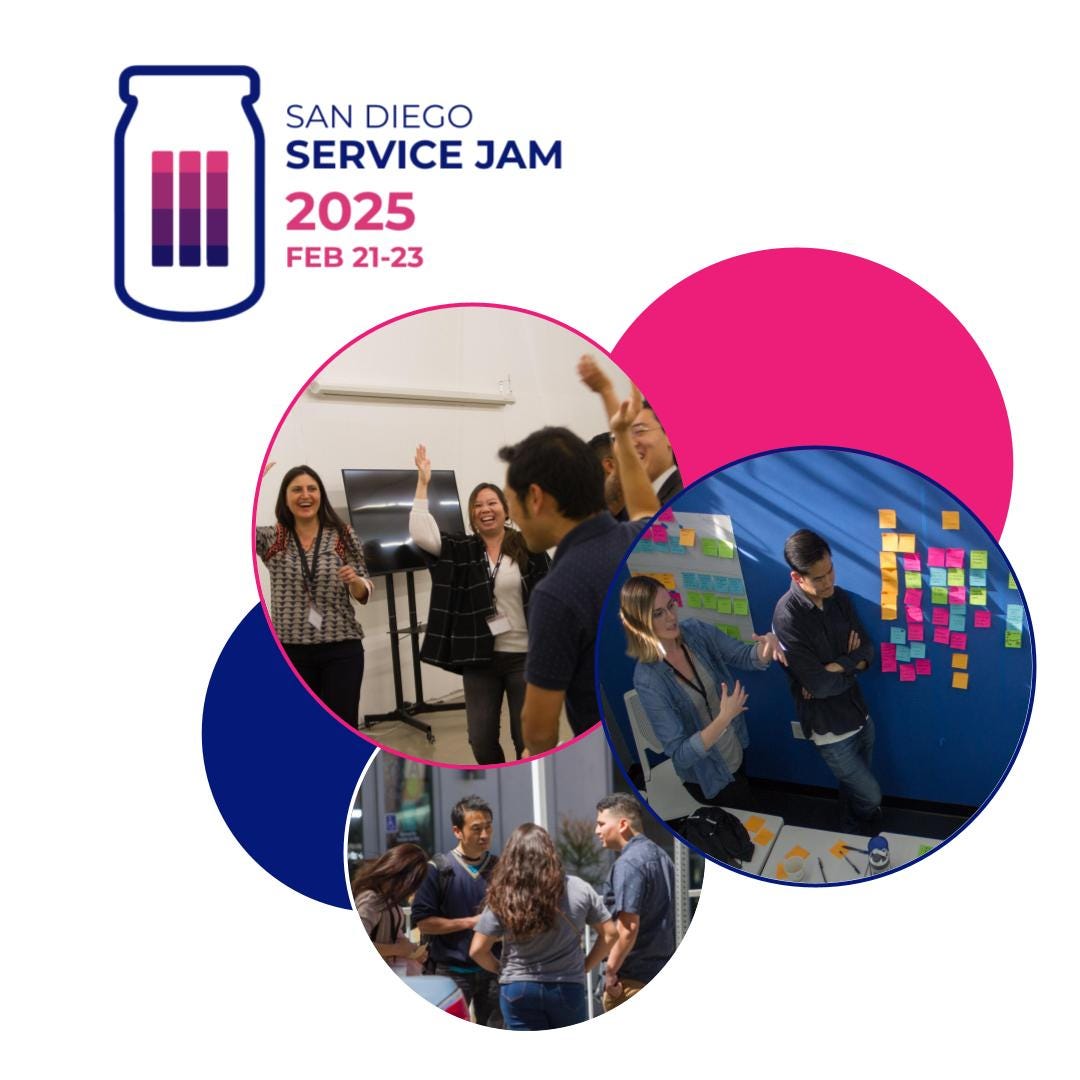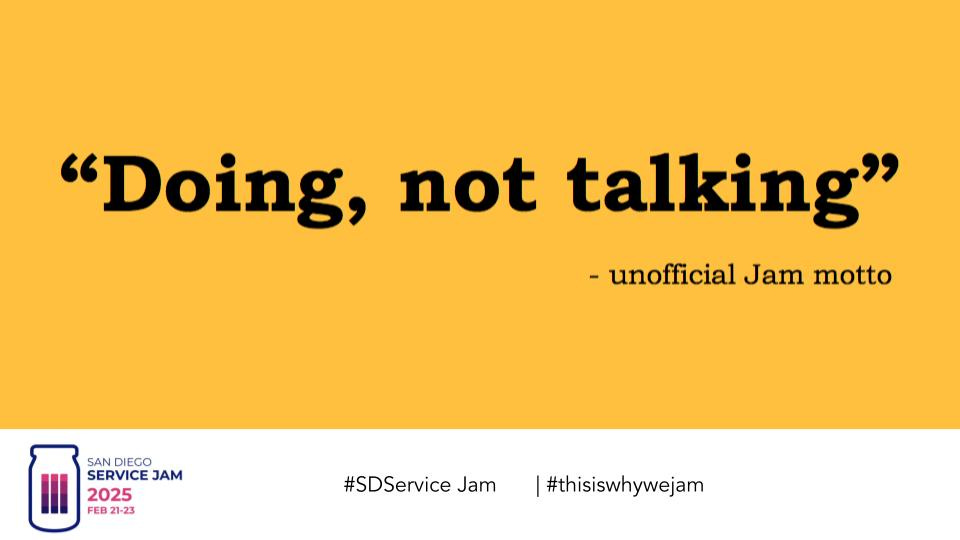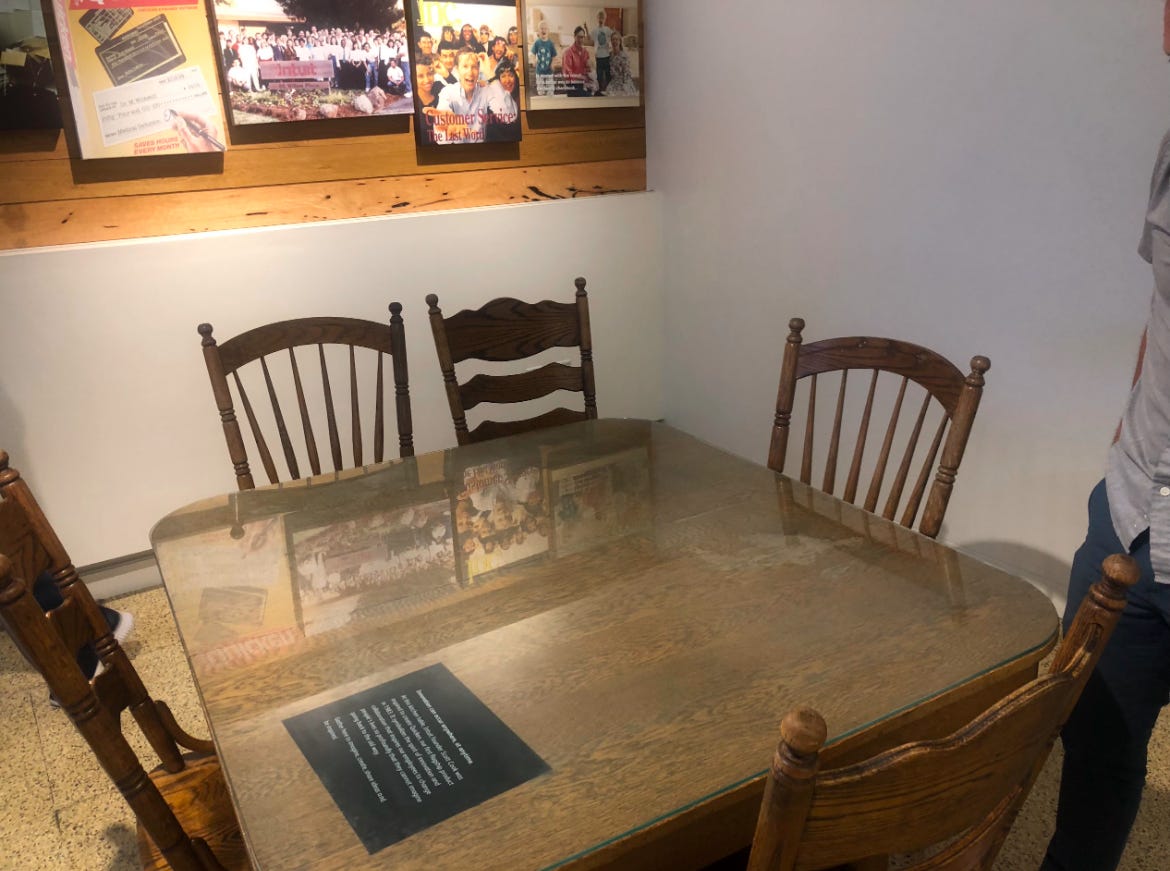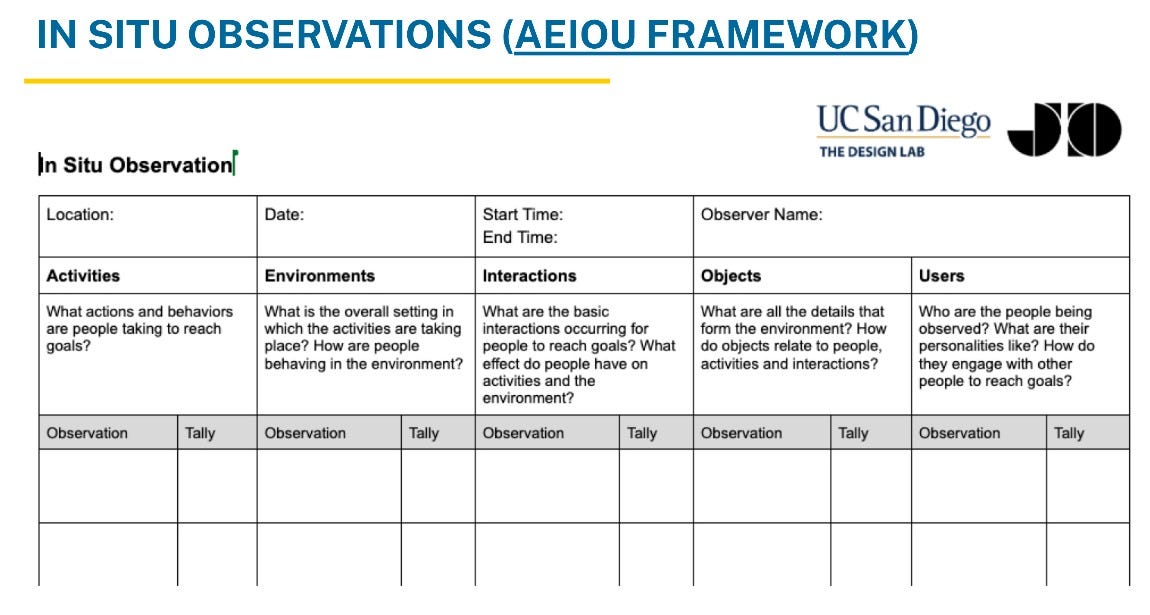"Doing, not talking" - The Importance of Observation in Building Empathy
Lessons inspired by the Global Service Jam to understand your stakeholders
👋 Howdy! Thanks for reading Learning, Designed. Welcome to the 5 new subscribers who joined our community in the last week. I love seeing familiar names in my inbox and I’ve been checking in personally with folks who are subscribed. Looking forward to connecting!
I’m writing because education wasn't designed around students, but we can improve the learner experience through design. I share stories, tips, and work in progress weekly.
Why it matters:
It’s almost time for Global Service Jam in San Diego, and the “unofficial” motto of the the Jam is “doing, not talking" to describe he applied approach to learning at the Jam. It also offers an important insight to understand stakeholders in the discovery process.
Go deeper:
Global Service Jam is a platform to learn and do service design with coach-practitioners, speakers, and aspiring designers in community.
Not only is the Jam how I first discovered and used human-centered design over a decade ago, but also it brings to life my mission to advance “democratizing design.” I’ve been “jamming,” “coaching,” and organizing the Jam in DC and San Diego ever since.
We recently held a welcome call with our 9-person coaching team with practitioners from large tech companies, small consultancies, and even educators using design to transform schools and classrooms. I love this milestone because it's an opportunity to share the “secrets” of the Jam that create the environment that people rave about.
The cultural “secret sauce” of the Jam
🤲 It’s community-driven. The event is volunteer-run and budget neutral. Every bit of funding through sponsorships or ticket sales goes back into the event. There is no profit from the Jam. Being community-oriented makes it easy to get involved and to support through sponsorship, and inexpensive to access.
🐔 It’s designed to have fun while learning. It’s action-packed. Rubber chickens are everywhere. They’re designed to keep the mood light and help Jammers avoid taking themselves too seriously. They’re also a reminder that you can take your work seriously and not take yourself too seriously.
🙊 The unofficial Jam motto is “doing, not talking.” There are 4 speakers during the 48 hour event, just 15-20 mins each. "Flash talks" build skills and offer guidance to immediately apply in the design process with help from coaches.
While this motto is encouragement for Jammers to learn by doing, there’s a second meaning for designers to take into their practice: watch what people do, and be cautious of what people say.
The challenge of the say-do gap
When people ask me how often I go to the gym I often say “a few times a week.” Asking “when was the last time you went to the gym?” might offer a slightly more accurate insight. But looking at my calendar or seeing my lifestyle over a week— that reveals an even more unfiltered experience.
The foundation for the human-centered design process is built on empathy. Common practices for building empathy often focus on talking directly to stakeholders. Talking to people is valuable, especially when they are closely involved in the problem space. You can learn a lot by talking to people. But it won’t give you the whole picture. The more filters you can remove from someone rationalizing their behavior or motivations to observe them in real time, the better understanding you will gain. Closing the gap between what you understand about people’s experience based on what they say vs. what they do is at the core of successful discovery and empathy. And importantly, testing assumptions about “what people will do” will bring your idea quickly into reality.
“Follow-me-homes”: A practice for closing the say-do gap
At Intuit, I learned a “Design for Delight” practice called “follow-me-homes” (FMHs). Scott Cook, Intuit’s founder, conducted the earliest FMHs with his wife at the kitchen table while she managed their finances.
From this process of observation through FMHs, Quickbooks was born. Scott saw the pains, frustrations, friction through the operational and emotional process of the current experience, and it helped build empathy. It’s hard to replace seeing the problem in context. Worth noting, this approach is now deep in the DNA of building a multi-billion dollar company.
Observation in the discovery and empathy process
This past week we prepared UC-San Diego Junior Designers to conduct interviews with stakeholders in their quarter-long discovery projects. They outlined goals and questions for their interviews and prototyped them with our coaching team. The process requires important preparation and helps inform what you understand about the problem and how people are encountering it today through their stories and experience.
But before setting them up for interviews, we reminded them about the importance of getting into people’s world and seeing how they work and live. We shared the AEIOU framework for organizing your observations while you’re “in situ” with your stakeholders, watching how they behave in the world. Importantly, we reminded them to “look for duct tape,” or the evidence of how users are adapting to the challenges they’re experiencing today, as it’s often the first clue of an unaddressed need.
Both interviews and observation are important approaches in the discovery process to build empathy with stakeholders. They build off one another and often I grow engagement in the design process by interviewing, building rapport, and requesting to observe something specific we discussed.
Tips to try your own “Follow-me-Home”
Ask for permission: Request to observe the stakeholders you want to learn from (if it’s focused on a particular task) or find ways to watch people “in their natural environment.”
Go to your stakeholder, in pairs: 2 sets of eyes and ears are better than one. Take notes independently, compare what you learned, and use those collective observations to build a more holistic picture.
Nothing is irrelevant: Avoid judgment and take note of context to observe the context your stakeholder exists within- what is the backdrop of the activity their completing and the environment that they’re working in? How do they behave in the situation? Importantly, look for the duct tape; how are people solving their problems on their own? Thoughtful design can emerge from this recognition.
Discuss with someone else: We often enhance our meaning-making through conversation with others. Explaining what you saw and learned outside of the group who observed can help surface new and novel insights. What did you learn? What questions did it surface? What patterns do you see? These answers should inform your continued discovery.
Insights from the Field
Bringing you voices from across education to answer:
What advice would you give to someone driving change in education?
“Gather "do" data, not just "say" data. While “say data" (people's opinions and stated intentions) are valuable, observing and measuring “do data” (their actual behavior) provides more rigorous evidence as to whether a change will lead to the expected outcome. Utilize prototypes to gather "do" data before fully implementing a change, to de-risk the outcome by minimizing the discrepancy between what people say and what they do.”
Former CEO, Peer Insight, Co-author of The Experimentation Field Book: A Step-by-Step Project Guide
Sharing this with a colleague is the most meaningful way to show it made an impact.
Please click the ❤️ button on this post so more people can discover it on Substack. Tell me what you think in the comments!







